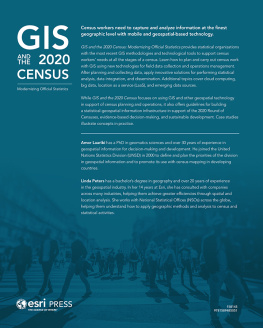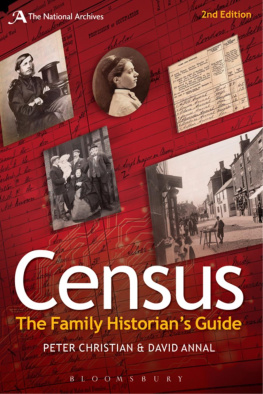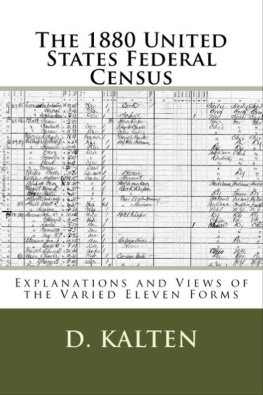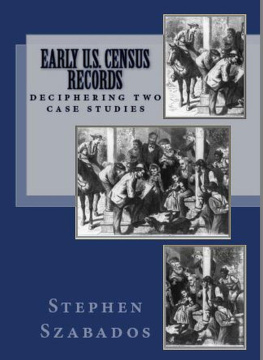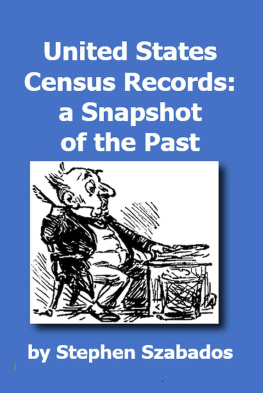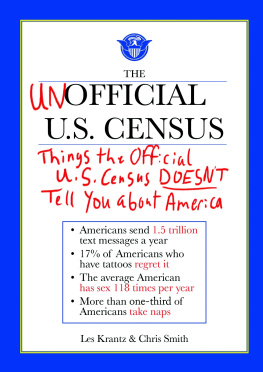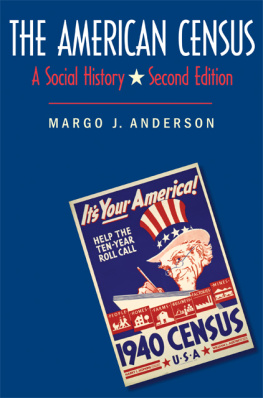

Cover credits: Income variable data provided by Michael Bauer Research GmbH.
Esri Press, 380 New York Street, Redlands, California 92373-8100
Copyright 2019 Esri
All rights reserved.
The Library of Congress has cataloged the print edition as follows:
Names: Laaribi, Amor, author. | Peters, Linda.
Title: GIS and the 2020 census : modernizing official statistics / Amor
Laaribi, Linda Peters.
Description: Redlands, California : Esri Press, 2019.
Identifiers: LCCN 2018060051 (print) | LCCN 2019007152 (ebook) | ISBN
9781589485051 (electronic) | ISBN 9781589485044 (pbk. : alk. paper)
Subjects: LCSH: CensusMethodology. | CensusGeographic information systems.
Classification: LCC HA179 (ebook) | LCC HA179 .L33 2019 (print) | DDC 352.7/50285dc23
LC record available at https://urldefense.proofpoint.com/v2/url?u=https-3A__lccn.loc.gov_2018060051&d=DwIFAg&c=n6-cguzQvX_tUIrZOS_4Og&r=qNU49__SCQN30XC-f38qj8bYYMTIH4VCOt2Jb8fvjUA&m=N9LDm816lpUOSrnLbGNLKNGC9sSQOOxCGez3LIoTHM&s=IU2vJ0BdojtLU_0AhLGaxkrJaFhjH2348dHKCFbJlUA&e=
The information contained in this document is subject to change without notice.
US Government Restricted/Limited Rights: Any software, documentation, and/or data delivered hereunder is subject to the terms of the License Agreement. The commercial license rights in the License Agreement strictly govern Licensees use, reproduction, or disclosure of the software, data, and documentation. In no event shall the US Government acquire greater than RESTRICTED/LIMITED RIGHTS. At a minimum, use, duplication, or disclosure by the US Government is subject to restrictions as set forth in FAR 52.227-14 Alternates I, II, and III (DEC 2007); FAR 52.227-19(b) (DEC 2007) and/or FAR 12.211/12.212 (Commercial Technical Data/Computer Software); and DFARS 252.227-7015 (DEC 2011) (Technical Data Commercial Items) and/or DFARS 227.7202 (Commercial Computer Software and Commercial Computer Software Documentation), as applicable. Contractor/Manufacturer is Esri, 380 New York Street, Redlands, CA 92373-8100, USA.
@esri.com, 3D Analyst, ACORN, Address Coder, ADF, AML, ArcAtlas, ArcCAD, ArcCatalog, ArcCOGO, ArcData, ArcDoc, ArcEdit, ArcEditor, ArcEurope, ArcExplorer, ArcExpress, ArcGIS, arcgis.com, ArcGlobe, ArcGrid, ArcIMS, ARC/INFO, ArcInfo, ArcInfo Librarian, ArcLessons, ArcLocation, ArcLogistics, ArcMap, ArcNetwork, ArcNews, ArcObjects, ArcOpen, ArcPad, ArcPlot, ArcPress, ArcPy, ArcReader, ArcScan, ArcScene, ArcSchool, ArcScripts, ArcSDE, ArcSdl, ArcSketch, ArcStorm, ArcSurvey, ArcTIN, ArcToolbox, ArcTools, ArcUSA, ArcUser, ArcView, ArcVoyager, ArcWatch, ArcWeb, ArcWorld, ArcXML, Atlas GIS, AtlasWare, Avenue, BAO, Business Analyst, Business Analyst Online, BusinessMAP, CityEngine, CommunityInfo, Database Integrator, DBI Kit, EDN, Esri, esri.com, Esri Team GIS, Esri The GIS Company, Esri The GIS People, Esri The GIS Software Leader, FormEdit, GeoCollector, Geographic Design System, Geography Matters, Geography Network, geographynetwork.com, Geoloqi, Geotrigger, GIS by Esri, gis.com, GISData Server, GIS Day, gisday.com, GIS for Everyone, JTX, MapIt, Maplex, MapObjects, MapStudio, ModelBuilder, MOLE, MPS Atlas, PLTS, Rent-a-Tech, SDE, SML, SourcebookAmerica, SpatiaLABS, Spatial Database Engine, StreetMap, Tapestry, the ARC/INFO logo, the ArcGIS Explorer logo, the ArcGIS logo, the ArcPad logo, the Esri globe logo, the Esri Press logo, The Geographic Advantage, The Geographic Approach, the GIS Day logo, the MapIt logo, The Worlds Leading Desktop GIS, Water Writes, and Your Personal Geographic Information System are trademarks, service marks, or registered marks of Esri in the United States, the European Community, or certain other jurisdictions. CityEngine is a registered trademark of Procedural AG and is distributed under license by Esri. Other companies and products or services mentioned herein may be trademarks, service marks, or registered marks of their respective mark owners.
Ask for Esri Press titles at your local bookstore or order by calling 1-800-447-9778. You can also shop online at www.esri.com/esripress. Outside the United States, contact your local Esri distributor or shop online at eurospanbookstore.com/esri.
Esri Press titles are distributed to the trade by the following:
In North America:
Ingram Publisher Services
Toll-free telephone: 800-648-3104
Toll-free fax: 800-838-1149
E-mail:
In the United Kingdom, Europe, the Middle East and Africa, Asia, and Australia:
Eurospan Group
3 Henrietta Street
London WC2E 8LU
United Kingdom
Telephone 44(0) 1767 604972
Fax: 44(0) 1767 6016-40
E-mail: 158146
Contents
Foreword
Timothy Trainor, former chief geospatial scientist, US Census Bureau; former co-chair, UN Committee of Experts on Global Geospatial Information Management
Having worked on five decennial censuses in the US for a large and diverse population within a varied landscape, I have experienced many challenges, difficulties, successes, and celebrations in census taking. In the US, each decade provided opportunities for change and advancement. The 1980 Census experienced inconsistencies between changed boundaries, an outdated road network, and miscoded addresses. There also were demands for data at lower levels of geography to help local and state governments in their responsibilities. In response, the 1990 Census saw the development of a single database with GIS applications from which all geographic products were derived so that changes could be applied consistently. Changes also included a nationwide geographic framework for small areas. To address calls for a more complete statistical frame, the 2000 Census focused on creating a national address list that helped assure a more complete count. The next logical requirement, knowing and using the location of the addresses, was a major focus of the 2010 Census and was made possible by the growing use of GPS technology. As the 2020 Census nears, the use of satellite imagery to aid in address verification and the correct alignment of roads (and thereby many boundaries) is helping to assure solid geospatial information in support of the census.
A census is a primary source of data for each country. The data collected is usually part of a full census in which every household participates in the count. It is not a sample survey, it is not secondary or tertiary data; rather, it is the raw data that is then tabulated and aggregated to levels that are important to data users, leaders, decision-makers, and, in many cases, the law. The framers of the US Constitution outlined the importance of a census by calling for an enumeration every ten years in Article I, Section 2. Its importance was further acknowledged by assigning responsibility as the director for the first census in 1790 to Thomas Jefferson. For many countries, a census is foundationalit provides data and information on current conditions as well as future opportunities and challenges.
However, the numbers on their own are not relevant without an association to location. This is where geography plays its vital role. It answers the question where for a summary of people within a household, their age, their gender, their relationship to each other within the household, their health, economic condition, employment, and whatever other question may be included in a countrys census count. Knowing the where of a populations characteristics offers an important and interesting view on a communitys conditions and trends.
A census provides the data that allows us to begin the determination of a cause-and-effect relationship to important questions posed by why. Why so many people in this area and so few in that area? Why are there greater health issues in this area? Why is employment high or low here? Why are schools here and not there where school-age children live? Why is crime more prevalent in this one particular area? Why does this area appear healthy while that area doesnt? The questions are boundless, and the answers are enlightening. Based on these realizations, more where questions can lead to solutions, growth, and planning. Where are new or better transportation facilities in demand? Where is a new hospital or health-care unit required? Where are the best building locations for new schools or refurbishing of existing schools?
Next page
